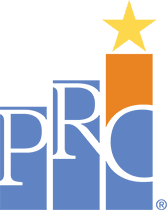Take a moment and think. What brings a smile to your work day? Is it front-row parking to start the morning? A homemade afternoon snack from coworkers? How about checking off that last “to-do” as you head out the door? No matter what, it’s the little things that give you a sigh of relief and sense of reward in your work.
Whether it’s a traveling department trophy or a Little Caesars pizza party, the smallest action of recognition could go a long way to improving your employee engagement. Some of the biggest hurdles to these “little things” are measurability, money, and time.
How to measure?
Perhaps, the largest challenge is how to quantify work that deserves a reward. First, start with a critical area for employee growth. Your PRC Key Drivers of Excellence help you understand which areas have the greatest influence on your overall scores. On a recent Beryl PX Connect thread, respondents focused on measuring overall global metrics, respect, and most improved communication score. PRC clients have the opportunity to strive for the 90th percentile, which can easily be measured on EasyView.com or the EasyView App. Your friendly competition could be measured unit to unit or hospital to hospital based on your organization’s size.
You don’t need to SuperSize
Remember the days when McDonalds would ask “Want to Supersize that for an extra $2?” Looking back, an extra-large meal at an extra expense seems wasteful on your wallet and caloric intake. You don’t need to supersize the reward to make it sweet; a small fry will do just fine.
A recent article by Forbes makes the bold statement that, “You can’t afford not to invest in employee recognition.” Some cost-effective options are distributing a press release, quick yet appreciative celebration with leadership, or a traveling trophy. It might not be as prestigous as your traveling pub trivia trophy each week, but it can be more unique. Suggestions from senior leaders who have implemented these programs successfully have used: a painted gold globe for global metrics, a crown lapel pin to represent respect, or short massages from Licensed Massage Therapy students during breaks. Each state is different, but LMT students require “at least 200 hours of hands-on instruction in an in-person setting” (massagetherapylicense.org), making them a credible and affordable resource for recognition.
Add another layer of cheese to your reward, because the silliness creates discussion/questions for patients and families at a time when they need a smile the most. So, whether it’s a write up in the newsletter or an extra hour of PTO, your employees will appreciate it. Remember that a small fry is tastier than no fry at all.
Make it meaningful
Nobody likes a state champ who wins every year. In the hospital setting, create goals that are diverse and truly attainable to your size. A night shift nursing staff might not have the same expectation of day-shifters. With increasing rates of physician burnout, it’s crucial to reserve time for fun and relief. As Lexy Fancher Dominguez recently expressed on the PRCcast, Mondays With Mel, burnout increasingly begins in med school. As employers, it’s our job to give their jobs meaning. A recent study conducted by A Great Place to Work ranks five keys to create a meaningful employee recognition program:
- Relevance
- Timeliness
- Personalization
- Small accomplishments
- Understand the bigger picture
Keep it meaningful by being specific to your organization and understanding what timeframes (monthly, quarterly, yearly) will produce the most appreciation. Recognition from peers in person or on your intranet may find more motivation amongst teams and requires little time away from patients.
As you continue your work day, think about what makes you smile and then use that to transfer your grin from face-to-face in the hallway. Recognize your peers, recognize your employees, and recognize your leaders. We are all here to make healthcare and the patient experience better. We might as well start with the little things

